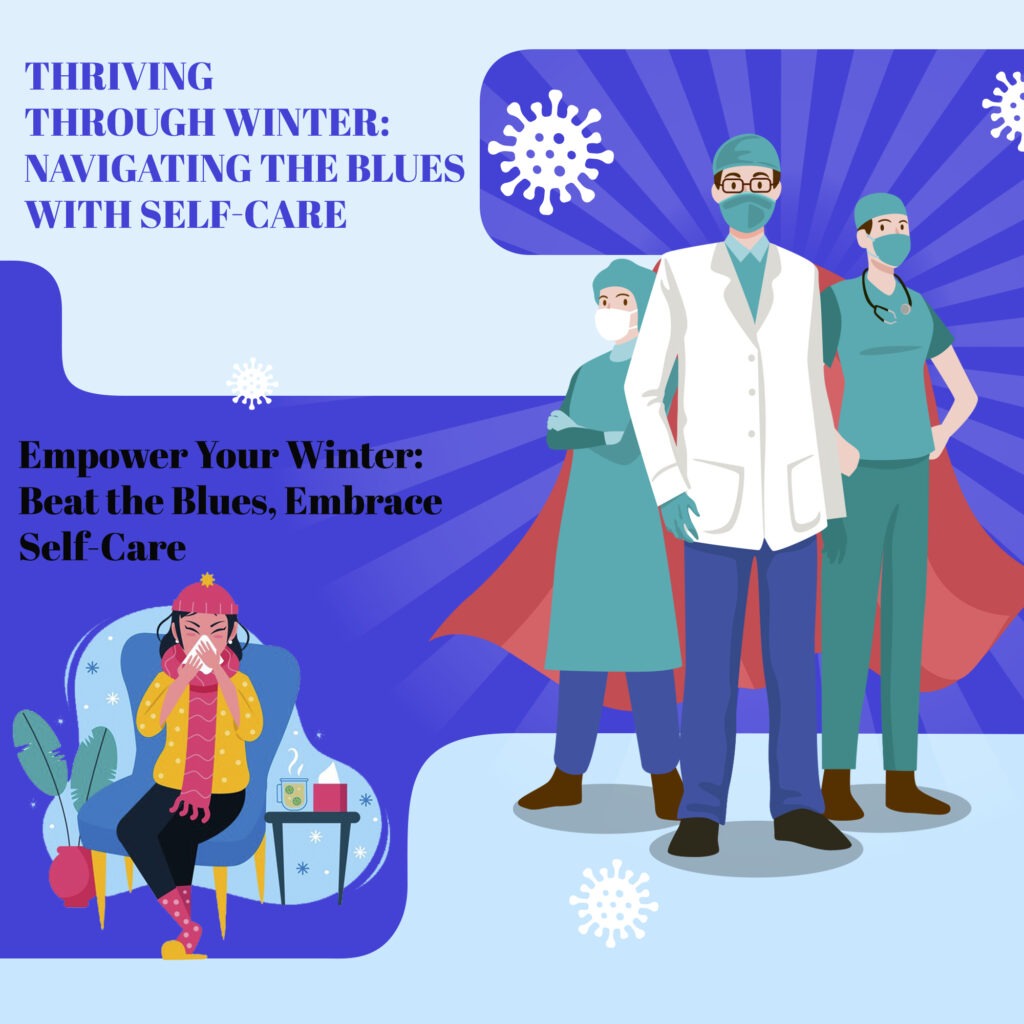
What is winter blues/seasonal affective disorder?
The “winter blues” refers to a phenomenon where some people experience a mild form of depression or a decrease in energy and motivation during the winter months. This condition is often associated with the lack of sunlight and shorter days.
What are the potential causes of winter blues?
The winter blues, also known as Seasonal Affective Disorder (SAD), is believed to be linked to several factors, and the exact cause is not fully understood. However, some contributing factors include:
- Reduced Sunlight Exposure
- Disruption of Circadian Rhythm
- Melatonin Levels
- Serotonin Levels
- Biological Vulnerability
- Genetic Factors
- Reduced Physical Activity
- Social and Environmental Factors
- Dietary Changes
How to beat Winter Blues?
Here are some strategies to help alleviate the winter blues:
- Increase Exposure to Light: Spend time outdoors during daylight hours, even on overcast days. Open curtains and blinds to let natural light into your home or workspace. Consider using a light therapy box, especially in the morning, to mimic the effects of sunlight.
- Stay Active: Regular physical activity has been shown to improve mood and reduce feelings of fatigue. Find indoor exercises that you enjoy, such as going to the gym, taking fitness classes, or practicing yoga. Alternatively, embrace winter activities like skiing or snowshoeing if weather permits.
- Maintain a Healthy Diet: Eating a well-balanced diet with plenty of fruits, vegetables, whole grains, and lean proteins can positively impact your mood and energy levels. Avoid excessive consumption of caffeine and sugar, as they can contribute to energy crashes.
- Socialize and Seek Support: Stay connected with friends and family. Socializing can provide emotional support and help combat feelings of isolation. Plan activities with loved ones, whether it’s a cozy night in, a winter-themed outing, or a virtual get-together.
- Create a Cozy Environment: Make your living space warm and inviting. Use soft lighting, add blankets or pillows, and incorporate comforting scents. Creating a cozy atmosphere can contribute to a sense of well-being during the colder months.
- Establish a Routine: Having a consistent daily routine can provide structure and stability, which may help combat feelings of lethargy and sadness. Include activities you enjoy and that promote relaxation.
- Practice Mindfulness and Relaxation Techniques: Engage in mindfulness activities, such as meditation or deep breathing exercises, to reduce stress and promote a positive mindset. Relaxation techniques can help manage symptoms of anxiety or tension.
- Set Realistic Goals: Break down tasks into manageable goals and celebrate small achievements. Setting realistic expectations for yourself can help maintain a sense of accomplishment and prevent feelings of overwhelm.
- Consider Professional Help: If your winter blues persist and significantly impact your daily life, consider seeking support from a mental health professional. They can provide guidance and offer strategies to cope with seasonal affective symptoms.
Remember, everyone’s experience with the winter blues is unique, and it’s important to find strategies that work best for you. If symptoms persist or worsen, consulting with a healthcare professional is advisable.